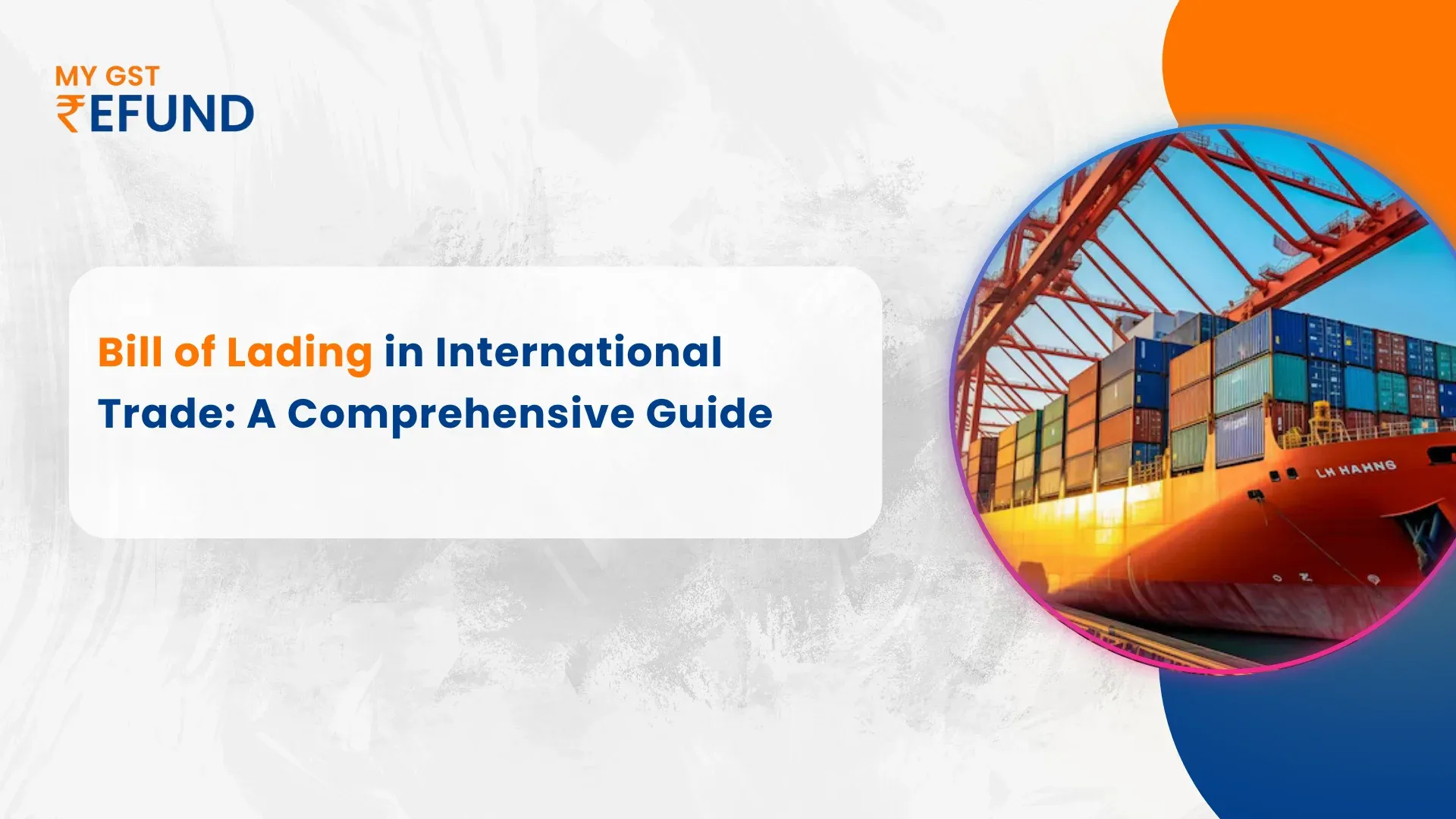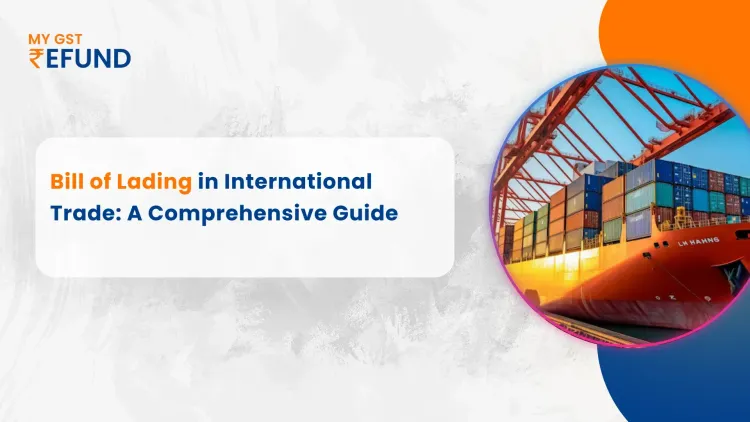Bill of Lading in International Trade: A Comprehensive Guide
A Bill of Lading (B/L) is a crucial legal document in trade. It serves as a receipt for the goods being shipped. It is also a contract for transporting those goods. Additionally, it acts as a document of title for transfer. A carrier or an agent of the carrier issues it. Several types of B/L exist, each serving different purposes. Their purpose depends on the goods, shipment type, and involved parties.
Key Functions of a Bill of Lading
1. Receipt for Goods: Throughout the document it confirms receipt and status of goods by the carrier as described by the contract. The bill of lading provides documentation of goods quantity, their type, along with their initial shipment condition.
2. Contract of Carriage: Through its function, it establishes contractual conditions between the shipper and the carrier for moving goods. The contract conditions related to the shipping route and costs, along with delivery specifications, appear in the bill of lading document.
3. Document of Title: The bill of lading functions as a legal instrument to demonstrate ownership rights for goods. A legal bill of lading enables someone to acquire goods upon their arrival because it allows transfer to different parties. Shipments can be both purchased and sold throughout transportation under trade because of this vital feature.
Read More: How to Start an Import and Export Business in India
Types of Bill of Lading
1. Straight Bill of Lading (Non-negotiable): This bill of lading type serves a particular recipient who cannot transfer its ownership to alternative parties. This receipt function enables the contract between shipping parties but prevents goods ownership to third parties throughout transport.
2. Order Bill of Lading (Negotiable): The order bill of lading holds negotiable status because it allows third parties to gain ownership of goods throughout their delivery period. The buyer (or another transferee) can obtain the goods by presenting the original bill of lading during the delivery period.
3. Sea Waybill: The sea waybill operates the same as a bill of lading, yet remains a non-transferable document. The consignee and buyer share identical roles in this case, or the goods do not require transfers during movement. Without the original documen,t the consignee need not present it at arrival time since the process remains simpler.
4. Clean Bill of document: The delivery status on clean bills of lading signifies that the carrier received the goods in perfect condition without any noted flaws. The carrier gives out this document during loading if it finds that the products are in good condition.
5. Dirty or Clause Bill of Lading: A clause in the bill of lading reveals the carrier received the goods with visible damage. The document often includes handwritten information about damages and shortages, together with other observed conditions of the goods upon receipt.
6. Through the Bill of Lading: The through bill of lading extends coverage between ocean transport and surface operations as well as aerial methods. The bill of lading serves merchants who need shipment services involving multiple carriers operating between numerous countries or regions.
Read More: Advance Authorisation Scheme: Eligibility, Duty Exemptions, and Compliance
Key Components of a Bill of Lading
1. Shipper’s Information: The document must present complete information about the organisation shipping the goods, including names and addresses.
2. Consignee’s Information: The document lists the precise information about the person or company who will receive the goods.
3. Carrier’s Information: The company or party that takes responsibility for merchandise delivery needs to provide its name together with its address.
4. Description of Goods: Full specifications regarding transported items include their variety and their exact amounts and weights, in addition to their dimensions.
5. Freight Details: The bill states whether the shipper paid the freight charges and the payment methods available for the charges.
6. Port of Loading and Destination: The shipping destination locations for the transported goods are mentioned through port addresses.
7. Terms and Conditions: In the contract between shipper and carrier, one will find all information regarding who bears what responsibilities and liabilities and how claims should be handled.
8. Date of Issue: A statement shows when the shipping company created the bill of lading.
9. Signature: Signature of the carrier (or its agent), acknowledging receipt of goods.
Importance of a Bill of Lading in International Trade
1. Facilitates Payment: When payment needs to happen for goods, the bill of lading serves as an efficient payment tool. An independent bank can pay the seller once it receives the bill of lading through a letter of credit system before the goods are transferred to the buyer.
2. Ownership Transfer: Through its document of title function, the bill of lading allows ownership transfers between the parties because the goods remain in transit.
3. Customs Clearance: A bill of lading is necessary for customs clearance procedures throughout the exporting and importing governmental territories. The document provides legal confirmation that the transported goods exist.
4. Dispute Resolution: A bill of lading operates as evidence to mediate settlement claims among shippers, consignees, and carriers when disputes about goods occur or when damage or loss happens.
Pros and Cons of a Bill of Lading
Pros
1. Security: The legal document protects shipping parties because it defines ownership rules together with transportation conditions between the sender and the receiver.
2. Transferability: Completing shipment with negotiable bills of lading lets the goods' owner easily pass ownership by transferring them to third parties, allowing trading and financing to occur.
3. Legal Proof: The bill of lading validates all terms between parties, including acknowledging goods receipt and documenting their contractual agreement.
4. Facilitates Financing: Financing for goods during transportation becomes possible through the bill of lading, which shows ownership of the goods being shipped.
Cons
1. Risk of Loss: A missing or damaged bill of lading creates difficulties when claiming merchandise ownership and in resolving disagreement situations.
2. Potential for Fraud: The ability to negotiate specific bills of lading often results in debatable situations about goods ownership and material condition during fraudulent activities.
3. Complexity: Multiparty transactions become particularly complex when performing bill of lading transactions because of the numerous available bill of lading styles and their corresponding legal requirements.
4. Delay in Delivery: The release of goods relies on presenting the original bill of lading, but especially in order bills, which result in prolonged delays for the delivery of goods.
Pro Tips: Plan Ahead and Easily Calculate Your GST Refund with Our Online GST Refund Calculator Tool!
Conclusion
A Bill of Lading is a critical document in international shipping and trade. It serves multiple functions as a receipt, contract, and document of title, which makes it indispensable in facilitating global trade. The type of bill of lading used will depend on the nature of the shipment, the terms of the contract, and the level of security required by the parties involved. While the Bill of Lading is essential for ensuring smooth transactions, proper handling and careful attention to detail are necessary to avoid legal or financial complications.
Frequently Asked Questions
1. What is a Bill of Lading, and why is it important?
Bill of Lading (B/L) is a legal document in shipping that serves as a contract of carriage, a receipt of goods, and a document of title. It ensures smooth trade transactions by defining shipment details and ownership transfer.
2. What are the different types of Bills of Lading?
Common types include Straight B/L (non-negotiable), Order B/L (negotiable), Seaway B/L (paperless), Bearer B/L (holder-based), Master B/L (carrier-issued), and House B/L (freight forwarder-issued). Each serves different roles in shipping and trade.
3. How do you fill out a Bill of Lading?
Bill of Lading requires details like shipper and consignee information, carrier details, shipment date, item description, HS codes, payment terms, and special instructions. It must be signed and dated to authorize the shipment legally.
4. What is the difference between a Bill of Lading and a Waybill?
Bill of Lading acts as a document of title, allowing ownership transfer, while a Waybill is non-negotiable and only functions as a shipping receipt. The consignee in a Waybill is the only party authorized to receive the goods.
Related Posts








